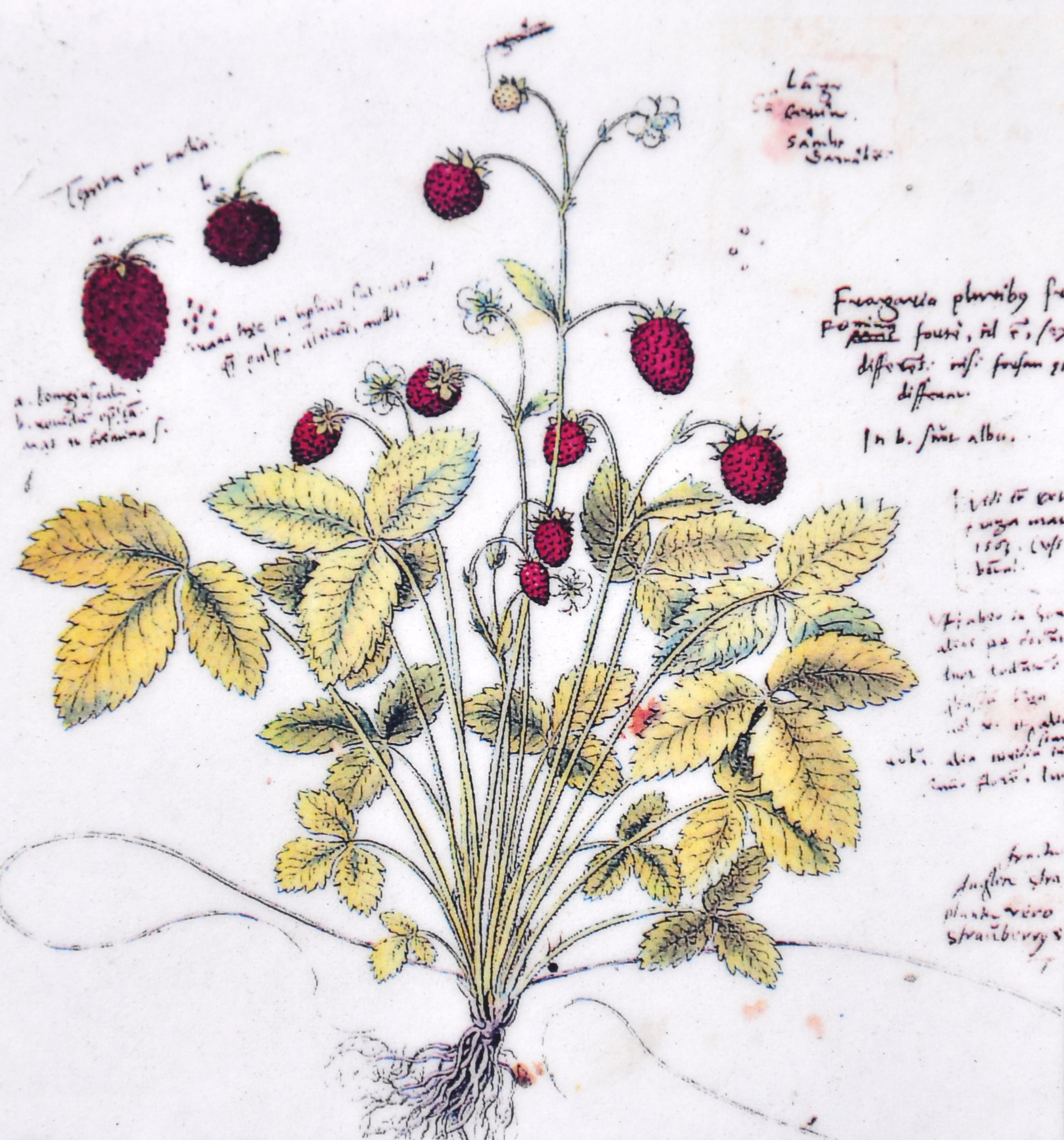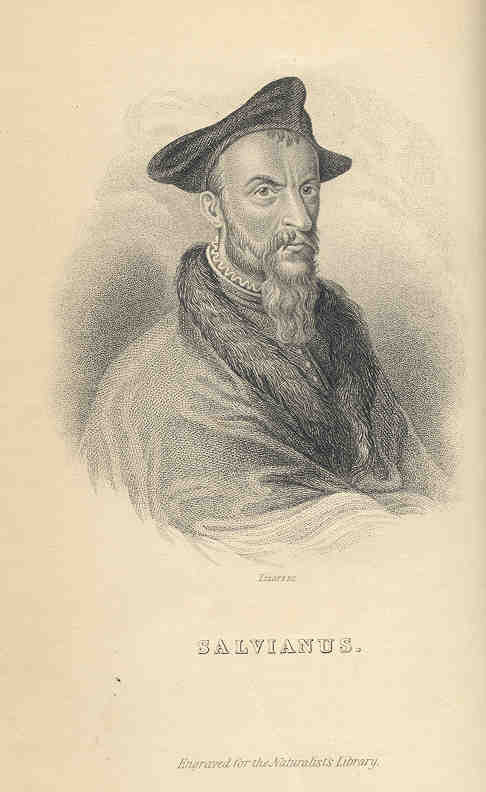|
1554 In Science
The year 1554 CE in science and technology included a number of events, some of which are listed here. Astronomy * Flemish astronomer Johannes Stadius' first published work, ''Ephemerides novae at auctae'', appears in Cologne Biology * Bolognese naturalist Ulisse Aldrovandi creates a herbarium. * Flemish herbalist Rembert Dodoens publishes his herbal ''Cruydt-Boeck'' in Antwerp. * The guinea pig is first described in the West by Swiss naturalist Conrad Gessner. * French physician Guillaume Rondelet begins publication of ''Libri de piscibus marinis'' in Lyon, a standard work on marine zoology. * Hippolito Salviani begins publication of ''Aquatilium animalium historiae'' in Rome, a foundation of modern ichthyology. * French anatomist Charles Estienne publishes a collection of tracts on agriculture, ''Praedium Rusticum''. Exploration * November – English captain John Lok voyages to Guinea. * French Franciscan voyager André Thévet publishes his account of an embassy to Const ... [...More Info...] [...Related Items...] OR: [Wikipedia] [Google] [Baidu] |
Conrad Gessner
Conrad Gessner (; la, Conradus Gesnerus 26 March 1516 – 13 December 1565) was a Swiss physician, naturalist, bibliographer, and philologist. Born into a poor family in Zürich, Switzerland, his father and teachers quickly realised his talents and supported him through university, where he studied classical languages, theology and medicine. He became Zürich's city physician, but was able to spend much of his time on collecting, research and writing. Gessner compiled monumental works on bibliography (''Bibliotheca universalis'' 1545–1549) and zoology (''Historia animalium'' 1551–1558) and was working on a major botanical text at the time of his death from plague at the age of 49. He is regarded as the father of modern scientific bibliography, zoology and botany. He was frequently the first to describe species of plants or animals in Europe, such as the tulip in 1559. A number of plants and animals have been named after him. Life Conrad Gessner was born on 26 March 1516, ... [...More Info...] [...Related Items...] OR: [Wikipedia] [Google] [Baidu] |
Guinea
Guinea ( ),, fuf, 𞤘𞤭𞤲𞤫, italic=no, Gine, wo, Gine, nqo, ߖߌ߬ߣߍ߫, bm, Gine officially the Republic of Guinea (french: République de Guinée), is a coastal country in West Africa. It borders the Atlantic Ocean to the west, Guinea-Bissau to the northwest, Senegal to the north, Mali to the northeast, Cote d'Ivoire to the southeast, and Sierra Leone and Liberia to the south. It is sometimes referred to as Guinea-Conakry after its capital Conakry, to distinguish it from other territories in the eponymous region such as Guinea-Bissau and Equatorial Guinea. It has a population of million and an area of . Formerly French Guinea, it achieved independence in 1958. It has a history of military coups d'état.Nicholas Bariyo & Benoit FauconMilitary Faction Stages Coup in Mineral-Rich Guinea ''Wall Street Journal'' (September 5, 2021).Krista LarsonEXPLAINER: Why is history repeating itself in Guinea's coup? Associated Press (September 7, 2021).Danielle PaquettH ... [...More Info...] [...Related Items...] OR: [Wikipedia] [Google] [Baidu] |
John Lok
John Lok was the son of Sir William Lok, the great-great-great-grandfather of the philosopher John Locke (1632–1704). In 1554 he was captain of a slave trading voyage to Guinea. An account of his voyage was published in 1572 by Richard Eden. Family John Lok's date of birth is unknown. He was one of the nineteen children of the London mercer Sir William Lok by his second wife, Katherine Cooke (d. 14 Oct 1537), daughter of Sir Thomas Cooke of Wiltshire. He was a half-brother of the mercer Thomas Lok (8 February 1514 – 9 November 1556), Sir William Lok's eldest surviving son and heir by his first wife. His brothers and sisters of the whole blood were: *Dorothy Lok, who married firstly the London merchant Otwell Hill (d.1543), and secondly John Cosworth of London and Cornwall, merchant. Otwell Hill was the brother of Richard Hill. *Katherine Lok, who married firstly Thomas Stacey of London, Warden of the Mercers' Company in 1555 together with his brother-in-law, Thomas Lok, a ... [...More Info...] [...Related Items...] OR: [Wikipedia] [Google] [Baidu] |
English People
The English people are an ethnic group and nation native to England, who speak the English language in England, English language, a West Germanic languages, West Germanic language, and share a common history and culture. The English identity is of History of Anglo-Saxon England, Anglo-Saxon origin, when they were known in Old English as the ('race or tribe of the Angles'). Their ethnonym is derived from the Angles, one of the Germanic peoples who migrated to Great Britain around the 5th century AD. The English largely descend from two main historical population groups the West Germanic tribes (the Angles, Saxons, Jutes and Frisians) who settled in southern Britain following the withdrawal of the Ancient Rome, Romans, and the Romano-British culture, partially Romanised Celtic Britons already living there.Martiniano, R., Caffell, A., Holst, M. et al. Genomic signals of migration and continuity in Britain before the Anglo-Saxons. Nat Commun 7, 10326 (2016). https://doi.org/10 ... [...More Info...] [...Related Items...] OR: [Wikipedia] [Google] [Baidu] |
Agriculture
Agriculture or farming is the practice of cultivating plants and livestock. Agriculture was the key development in the rise of sedentary human civilization, whereby farming of domesticated species created food surpluses that enabled people to live in cities. The history of agriculture began thousands of years ago. After gathering wild grains beginning at least 105,000 years ago, nascent farmers began to plant them around 11,500 years ago. Sheep, goats, pigs and cattle were domesticated over 10,000 years ago. Plants were independently cultivated in at least 11 regions of the world. Industrial agriculture based on large-scale monoculture in the twentieth century came to dominate agricultural output, though about 2 billion people still depended on subsistence agriculture. The major agricultural products can be broadly grouped into foods, fibers, fuels, and raw materials (such as rubber). Food classes include cereals (grains), vegetables, fruits, cooking oils, meat, milk, ... [...More Info...] [...Related Items...] OR: [Wikipedia] [Google] [Baidu] |
Charles Estienne
Charles Estienne (; 1504–1564), known as Carolus Stephanus in Latin and Charles Stephens in English, was an early exponent of the science of anatomy in France. Charles was a younger brother of Robert Estienne I, the famous printer, and son to Henri, who Latinized the family name as . He married Geneviève de Berly. After the usual humanistic training he studied medicine, and took his doctor's degree at Paris. He was for a time tutor to Jean-Antoine de Baïf, the future poet. It is uncertain whether he taught publicly. His career was interrupted by the oppressive persecutions in which their religious opinions involved the family. Éstienne, though from a family whose classical taste was their principal glory, did not betray the same servile imitation of the Galenian anatomy as his contemporary, Jacques Dubois. He appears to have been the first to detect valves in the orifice of the hepatic veins. He was ignorant, however, of the researches of the Italian anatomists; and his d ... [...More Info...] [...Related Items...] OR: [Wikipedia] [Google] [Baidu] |
Anatomist
Anatomy () is the branch of biology concerned with the study of the structure of organisms and their parts. Anatomy is a branch of natural science that deals with the structural organization of living things. It is an old science, having its beginnings in prehistoric times. Anatomy is inherently tied to developmental biology, embryology, comparative anatomy, evolutionary biology, and phylogeny, as these are the processes by which anatomy is generated, both over immediate and long-term timescales. Anatomy and physiology, which study the structure and function of organisms and their parts respectively, make a natural pair of related disciplines, and are often studied together. Human anatomy is one of the essential basic sciences that are applied in medicine. The discipline of anatomy is divided into macroscopic and microscopic. Macroscopic anatomy, or gross anatomy, is the examination of an animal's body parts using unaided eyesight. Gross anatomy also includes the branch of ... [...More Info...] [...Related Items...] OR: [Wikipedia] [Google] [Baidu] |
Ichthyology
Ichthyology is the branch of zoology devoted to the study of fish, including bony fish ( Osteichthyes), cartilaginous fish (Chondrichthyes), and jawless fish (Agnatha). According to FishBase, 33,400 species of fish had been described as of October 2016, with approximately 250 new species described each year. Etymology The word is derived from the Greek words ἰχθύς, ''ikhthus'', meaning "fish"; and λογία, ''logia'', meaning "to study". History The study of fish dates from the Upper Paleolithic Revolution (with the advent of "high culture"). The science of ichthyology was developed in several interconnecting epochs, each with various significant advancements. The study of fish receives its origins from humans' desire to feed, clothe, and equip themselves with useful implements. According to Michael Barton, a prominent ichthyologist and professor at Centre College, "the earliest ichthyologists were ''hunters and gatherers'' who had learned how to obtain the most use ... [...More Info...] [...Related Items...] OR: [Wikipedia] [Google] [Baidu] |
Rome
, established_title = Founded , established_date = 753 BC , founder = King Romulus (legendary) , image_map = Map of comune of Rome (metropolitan city of Capital Rome, region Lazio, Italy).svg , map_caption = The territory of the ''comune'' (''Roma Capitale'', in red) inside the Metropolitan City of Rome (''Città Metropolitana di Roma'', in yellow). The white spot in the centre is Vatican City. , pushpin_map = Italy#Europe , pushpin_map_caption = Location within Italy##Location within Europe , pushpin_relief = yes , coordinates = , coor_pinpoint = , subdivision_type = Country , subdivision_name = Italy , subdivision_type2 = Region , subdivision_name2 = Lazio , subdivision_type3 = Metropolitan city , subdivision_name3 = Rome Capital , government_footnotes= , government_type = Strong Mayor–Council , leader_title2 = Legislature , leader_name2 = Capitoline Assemb ... [...More Info...] [...Related Items...] OR: [Wikipedia] [Google] [Baidu] |
Hippolito Salviani
Hippolito Salviani (1514–1572) was an Italian physician, scholar and naturalist, noted for his Renaissance book ''Aquatilium animalium historiae'', depicting about hundred Mediterranean fish species, some from Illyria, and a few mollusks. He also wrote works on medicine, such as that dealing with Galen's theory of crises, and a topical play. Salviani taught at the Sapienza University of Rome, University of Rome until 1568. From 1550 until 1555 he was chief physician to the House of Farnese and three successive popes, Pope Julius III, Pope Marcellus II and Pope Paul IV. Salviani was born in Città di Castello. He studied medicine, developing a great interest in ichthyology and in natural history generally. He enjoyed the financial support of Cardinal Cervini (later Pope Marcellus II), enabling him to explore the Mediterranean coastline. Cervini's death caused Salviani to dedicate the work to Pope Paul IV. Aristotle's work on fish species is one of the earliest known. In the 1 ... [...More Info...] [...Related Items...] OR: [Wikipedia] [Google] [Baidu] |
Lyon
Lyon,, ; Occitan: ''Lion'', hist. ''Lionés'' also spelled in English as Lyons, is the third-largest city and second-largest metropolitan area of France. It is located at the confluence of the rivers Rhône and Saône, to the northwest of the French Alps, southeast of Paris, north of Marseille, southwest of Geneva, northeast of Saint-Étienne. The City of Lyon proper had a population of 522,969 in 2019 within its small municipal territory of , but together with its suburbs and exurbs the Lyon metropolitan area had a population of 2,280,845 that same year, the second most populated in France. Lyon and 58 suburban municipalities have formed since 2015 the Metropolis of Lyon, a directly elected metropolitan authority now in charge of most urban issues, with a population of 1,411,571 in 2019. Lyon is the prefecture of the Auvergne-Rhône-Alpes region and seat of the Departmental Council of Rhône (whose jurisdiction, however, no longer extends over the Metropolis of Lyo ... [...More Info...] [...Related Items...] OR: [Wikipedia] [Google] [Baidu] |







.jpg)